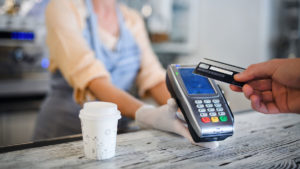Here’s the $20bn ignored market that has put first-mover Way2VAT in the driver’s seat

Pic: Getty Images
Way2VAT’s patented AI technology and platform can reclaim VAT from over 40 different tax jurisdictions.
Billions of dollars in Value Added Tax (VAT) go unclaimed each year by companies who do not understand how to recover VAT on their global corporate travel.
This is because the process of reclaiming the money can often be convoluted, exacerbated by the difficulties in dealing with the tax laws of other countries.
On top of that, the hassle of keeping bits of paper receipts, getting an approval, and then manually submitting them to the finance department meant that a lot of employees just don’t bother with it.
An ASX-listed company that saw this problem early and sought to bring a solution to the market is Israeli-based Way2VAT Ltd (ASX:W2V).
The company’s W2V platform is a web-based application that’s capable of reclaiming various types of VAT in more than 40 countries.
“We looked at that opportunity, and we’ve been saying that it’s about $20 billion of unclaimed money sitting in jurisdiction and tax authorities around the globe,” W2V’s CEO, Amos Simantov, told Stockhead.
The company’s first client was Amdocs, a Nasdaq-listed giant that liked Simantov’s idea from the very start.
“I approached Amdocs, which is one of Israel’s largest companies with 30,000 employees, and asked them whether they were reclaiming their foreign VAT, and they said no,” explained Simantov.
“Amdocs instantly said they wanted to use our platform, and the rest was history.”
What does the W2V platform do?
There are three types of expenses that the W2V platform deals with.
The first two are travel expenses – both foreign and local travel.
The third type of expense it deals with is accounts payable – those large invoices a company has to pay in various countries.
“If you are an Australian company, and you have employees who are traveling to Europe, any expenses they incur over there such as restaurants, events, transportations, hosting clients, they are all subject to VAT,” explained Simantov.
“Potentially, W2V can reclaim this money for the company from those foreign countries,” he added.
There’s also the local travel expenses incurred by businesses at home, which increased during the time of Covid.
“During the pandemic, employees were still traveling in their own country, and also had home office expenses,” said Simantov.
Simantov said he saw the opportunity locally after most companies he approached told him they were not claiming the VAT on those expenses, because they were deemed to be small tickets.
“In Australia, we can reclaim GST for up to five years back. So this could be a huge amount for local companies when you add it up,” he said.
Another type of expense that W2V can help reclaim VAT on is accounts payable.
For any Australian company that pays suppliers in other countries like Europe, there will be VAT attached to each invoice that the Aussie company has to pay for.
“Our W2V can reclaim that tax back, and we’re doing that in more than 40 different countries right now,” said Simantov.
Artificial Intelligence patent
In 2018, Way2VAT was granted the first ever patent in the US for its automated invoice analysis (AIA) technology.
The patent outlined its combined AI (artificial intelligence) technology: computer vision, natural language processing and OCR (Optical Character Recognition) – within the company’s VAT and expense management platform.
“What it does is mainly image recognition and computer vision. It uses AI and looks for images just like face recognition, but for invoices,” Simantov said.
When an invoice is scanned, the technology will do an online comparison to the tax regulation of the country it came from.
For example, after scanning a German receipt, the platform can tell you that Germany has a 20% tax for hotels, and 5% for beverages.
“When there is a 100% match, there is a handshake between the invoice and the country, and it will automatically reclaim the VAT for that country,” he said.
The platform can also be integrated seamlessly with a client’s ERP system with a simple API.
“We’re targeting a mix of enterprise and smaller businesses (SMB), those companies with employees of between 50 to 1,000,” said Simantov.
“These SMBs are 60% of the market, and therefore this is a great opportunity for a company like us to address the need in the market.”
This article was developed in collaboration with Way2VAT, a Stockhead advertiser at the time of publishing.
This article does not constitute financial product advice. You should consider obtaining independent advice before making any financial decisions.
Related Topics
UNLOCK INSIGHTS
Discover the untold stories of emerging ASX stocks.
Daily news and expert analysis, it's free to subscribe.
By proceeding, you confirm you understand that we handle personal information in accordance with our Privacy Policy.








